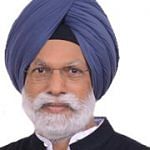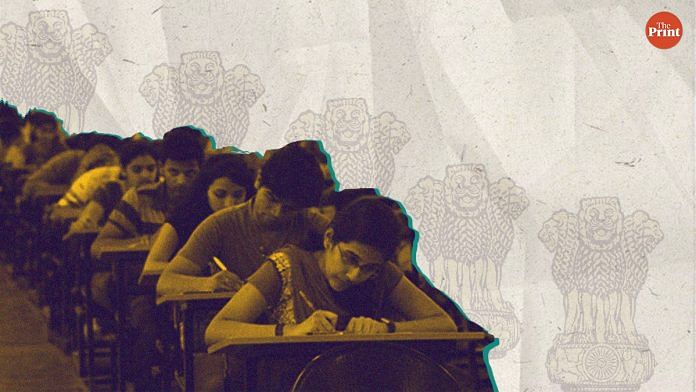NITI Aayog has recommended that the upper age limit for entry into the civil services should be lowered to 27-years of age for general category candidates. The government think tank also proposed an integrated exam for all civil services.
ThePrint asks: NITI Aayog says cap IAS entry age at 27: Keeping services youthful or limiting talent pool?
Mentorship and training much more effective with younger IAS officers
 Anil Swarup
Anil Swarup
Former secretary, government of India
I am convinced that budding IAS officers should be recruited at a younger age. The problem with older people entering the service is that it is extremely difficult to change their attitude and behaviour. Their attitudes have already been hardened and become almost like a hard-boiled egg — near impossible to change. The chances of their attitudes changing and being moulded according to the requirements of the services are much more when they are younger.
Mentorship and training are much more effective when those at the receiving end are young officers.
I am also of the view that domain specialisation isn’t necessarily something that is required for IAS officers. Ultimately, what is needed is leadership quality because it boils down to managing men and women in the organisation.
Moreover, even if we look at top private sector organisations, those heading it are hardly ever domain experts—they are just extremely competent at leading their team. Domain expertise may be helpful, but aren’t an imperative necessity. Being a domain expert may even lead to a sense of competitiveness with other domain experts in the profession. In fact, an IAS officer has to understand the issue and the context better than a domain expert.
Lowering IAS entry age will negatively impact marginalised people
 Amar Singh
Amar Singh
Vice President, Punjab Congress and retd IAS officer
Lowering the age limit to 27 will be of major disadvantage to those who come from weaker sections of society.
People who have grown up in extreme poverty suffer in every aspect of their life as a consequence of it. A Dalit or tribal person has a significantly less privileged childhood than those who are upper caste. But even within the general category, if an individual has lived in poverty, it is unfair to expect them to be aware of every institute, exams, and organisations that exist. The social capital is missing in such cases and acts as a major deterrent.
A lot of times, people from underprivileged background do not even know of a thing like IAS well into their 20s. A young child who is growing up in a well-to-do household or one whose parents are professors in a top university will know what IAS is when they are only 10 years of age. Hence, lowering the entry age into IAS to 27 will largely impact people from marginalised sections of society.
Initial years in the civil services involve being on the field, having younger officers helps
 Aruna Sharma
Aruna Sharma
Former steel secretary, government of India
The perils of entering the services at a later stage in one’s life are many. Most officers who enter an older age have to retire by the time they reach the post of an additional chief secretary, and sometimes even before they reach that post.
Keeping the services young makes sense. In no way will it deprive the services of any talent because every year there will be freshers entering the folds of the civil services. One must also keep in mind that the initial 9-10 years of the service requires one to be on the field at almost all times – this is where young officers will thrive.
There is also the viewpoint that because the IAS examinations are incredibly difficult to crack, more opportunities should be given. I entered the services when I was 22-years-old. It is true that hard work and luck play an extremely important role, but people younger than 27-years of age too can fully utilise their resources. They have enough opportunities at that age.
The question of alienating the youth does not appear because the intake will remain the same — only the pool will be younger now.
Also read: Why Niti Aayog’s suggestion to cut IAS, IPS entry age limit is unlikely to make headway
Laughable that NITI Aayog is making this recommendation
 Sewa Ram
Sewa Ram
Retd IAS officer
There may be a few advantages of lowering the entry age for civil services. But all major changes of this kind should be made keeping the current context of the country in mind.
Unemployment is rampant and one of the leading causes of distress in India today. This isn’t something that those making such recommendations should ignore. If the entry age is lowered, then the unemployed youth will suffer tremendously. This will really discourage them and they’d feel further lost once they realise that they are going to cross the age limit.
Aspirants who come from poorer sections will also be at a disadvantage because it takes time to accumulate the resources required to prepare for the civil services entrance exam. Thus, unemployed youth and poorer sections will be at a disadvantage if this suggestion is implemented.
Moreover, it is laughable that the NITI Ayog is making such a recommendation. Perhaps they don’t realise that most of them are over-age themselves. So if we apply their logic to their own institution, it means they are unfit to serve in the body themselves.
Older age of entry into the civil services comes with tremendous social cost
 Sanjay Dixit
Sanjay Dixit
Additional chief secretary, Rajasthan
I have always been of the opinion that the entry age for the civil services should be on the lower side. To that extent, the 27-year recommendation by the NITI Ayog seems to be in order.
A high age of entry is neither in the interest of the government nor in the interest of the officers. If they enter too late into the service, they come in wizened by experiences and set into patterns that may be hard to change.
Officers entering at an older age get to put in lesser years in service, thus forfeiting their chance to reach the top-most echelons of their services. For example, the reason that governments have a much-reduced pool of officers from reserved streams is because of the age relaxation they are given. When you have an adequate number of officers appearing from within the younger age pool, a higher age bracket only harms the career prospects of those who get in at an older age.
There is also the added trauma associated with older age of entry. By the time a candidate exhausts all his/her chances, there is hardly any other career left for him/her to join. Research into the plight of millions of such young women and men would tell us that older age of entry carries tremendous social cost.
By Fatima Khan, journalist at ThePrint. You can follow her on twitter @khanthefatima.







It is absurd to link recruitment age with the inability of the weaker sections of the society. Does it mean they do not have young talents?
I became a DM at the age of 26 of a very difficult district. Today most of the DMS are at least 35 years old. So when will they become senior officers—- when they are past 50 and very likely only a handful will have the age to become secretaries to the GOI.
OFFICERS WHO BELONG TO THE IAS AND IPS HAVE TO HAVE MORAL AND PHYSICAL COURAGE TO FACE THE CHALLENGES OF TODAY’S WORLD. A much married man or woman at the age of 45 as DM is neither good for the district nor for the person.
Many who enter the IAS IPS academies I am told are already married and with children. What kind of enthusiasm do you expect from them when the burden of family responsibilities are on their heads.
In my view, they should keep the maximum age limit at 25 and relaxation of 3 years only the SC AND ST CANDIDATES.
Has the Niti Ayog gone into the issue of why the civil services is so sought after in this country?
In many countries, a government job is rarely sought after. The economy is rich enough to attract the best minds to occupations that are wealth generating and skill oriented.
That the IAS and other civil services are being sought after by so many is itself a depressing factor.
Government cannot and never should be the prime employer. It should always be a facilitator.
Simply pegging the maximum age at 27 will not address the root cause of the phenomenon of so many people still hankering after the civil services. Niti aayog should think how this service, for that matter all government jobs become less preferable options.
A lot of arguments on both sides but no one is talking about the attitude that developed during probation remains till date of retirement.Spirit to serve country& its pupils is hardly visible in the cadre.Degradation in working culture from district level to secretariat isn’t hidden & even transparency can’t be expected.Lobbying for transfer posting is well known.Is it not recquired to be brought under discussion
We entered at the age of 22 and not done badly.When a person joins the servie at 30 and sometimes married with children what motivation he or she has to take risks in life and career.Secondly a person joining at a ripe age has fossilised ideas and not capable of changing his/her attitudes.An IAS officer faces many physical and mental challenges and thta requires shaping up at a young age.
Thirdly joining at the age of thirty and above means the person can rarely be a Secretary to GOI as the person would have reired.
If the country wants a vibrant courageous mentally and physically fit civil service to face any challenge and with integrity then we have to recruit them at a young age.I know many tribal nad SC boys and girls of young age will easily outshine anybody given proper education and training from the school level